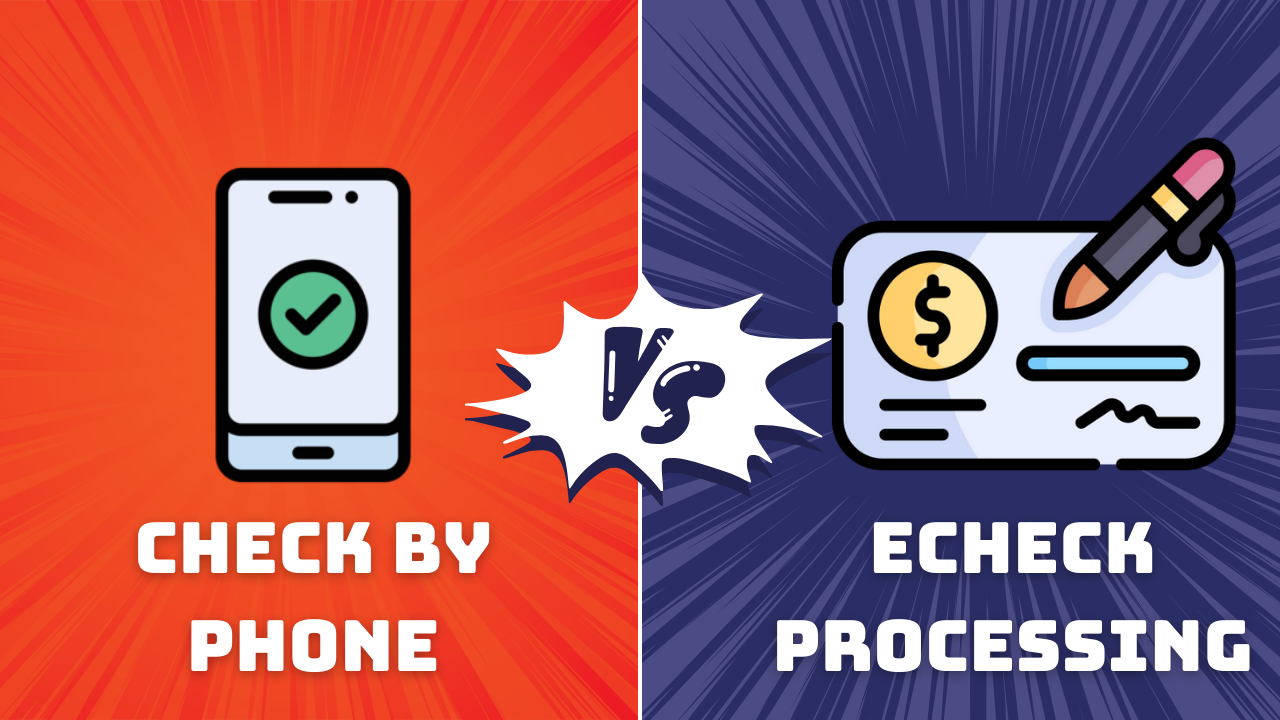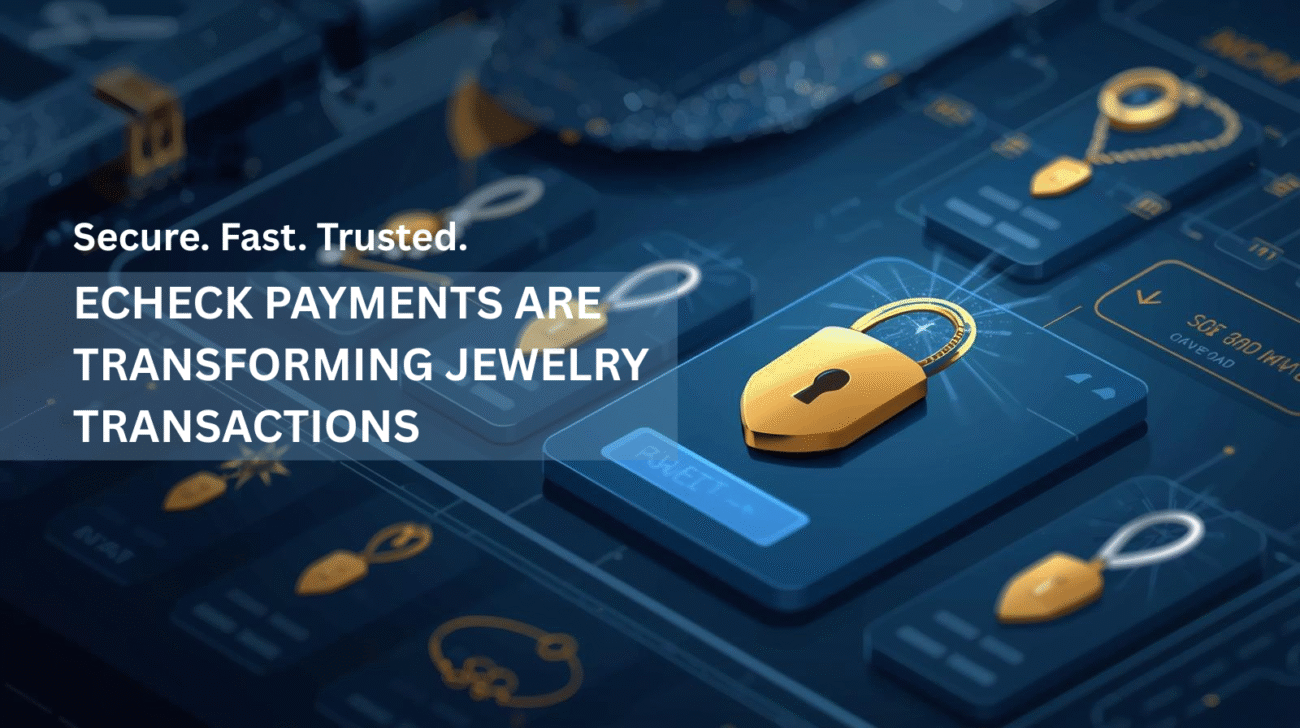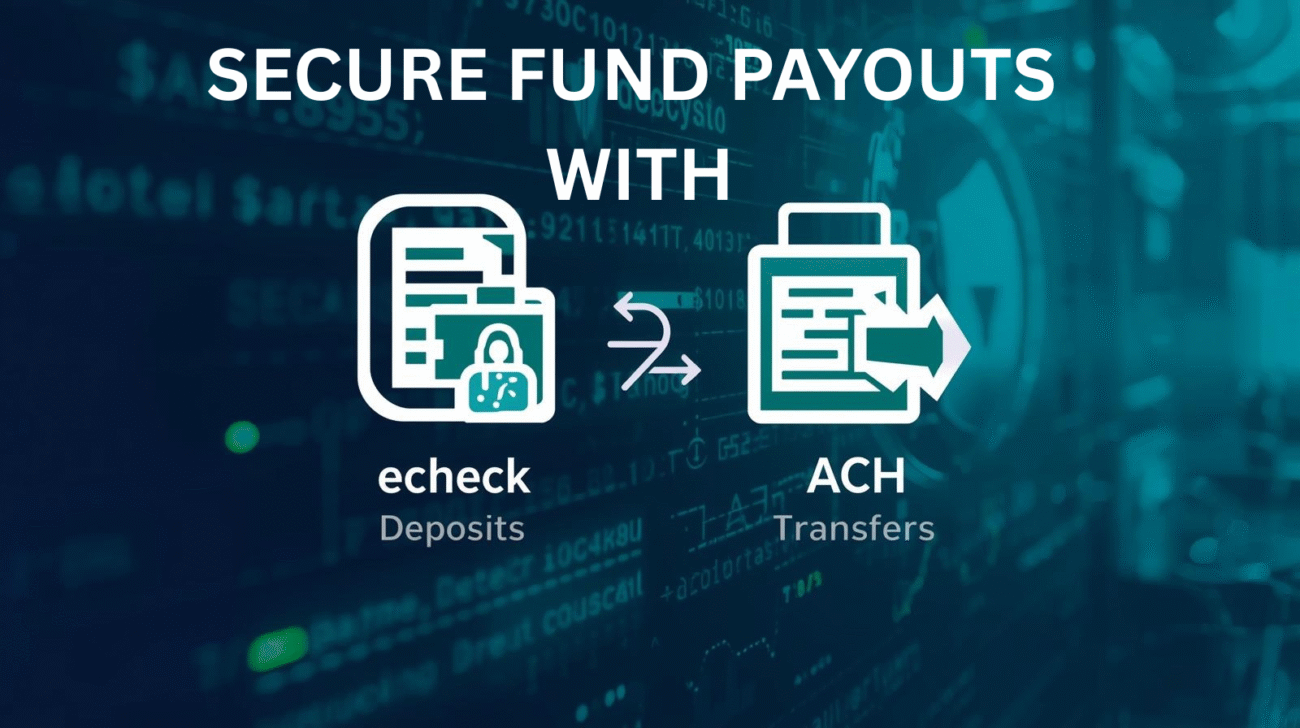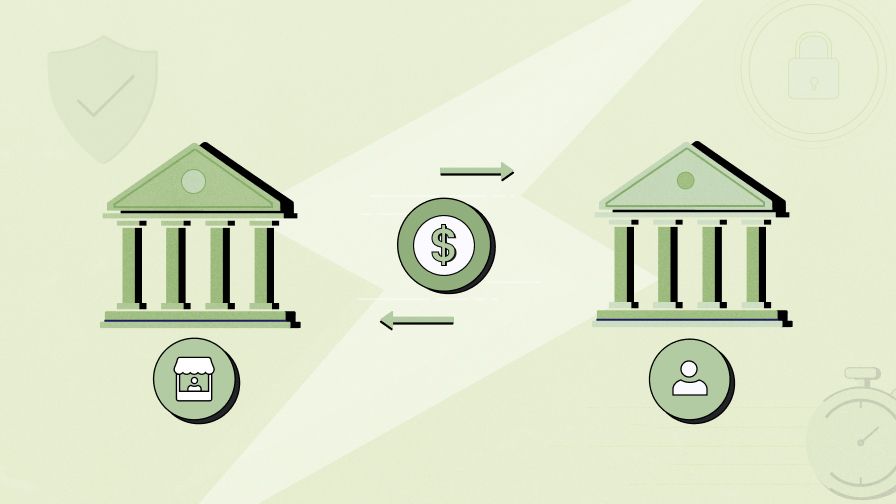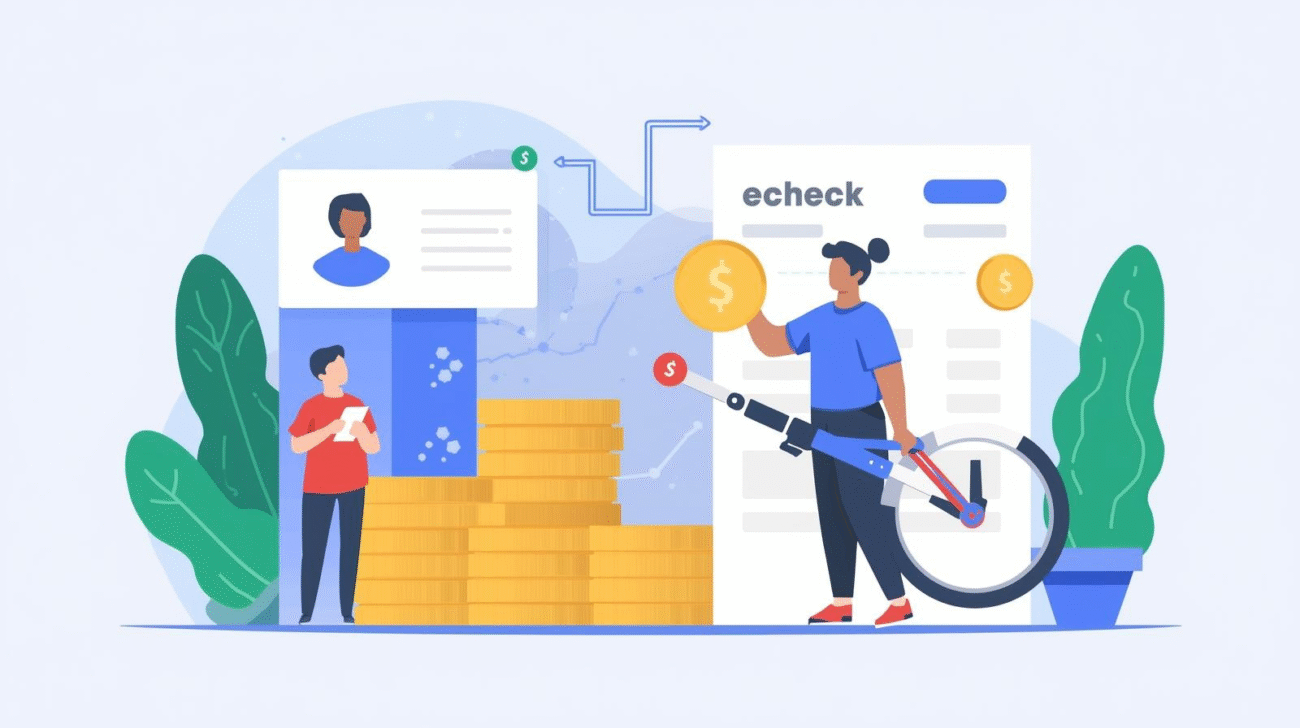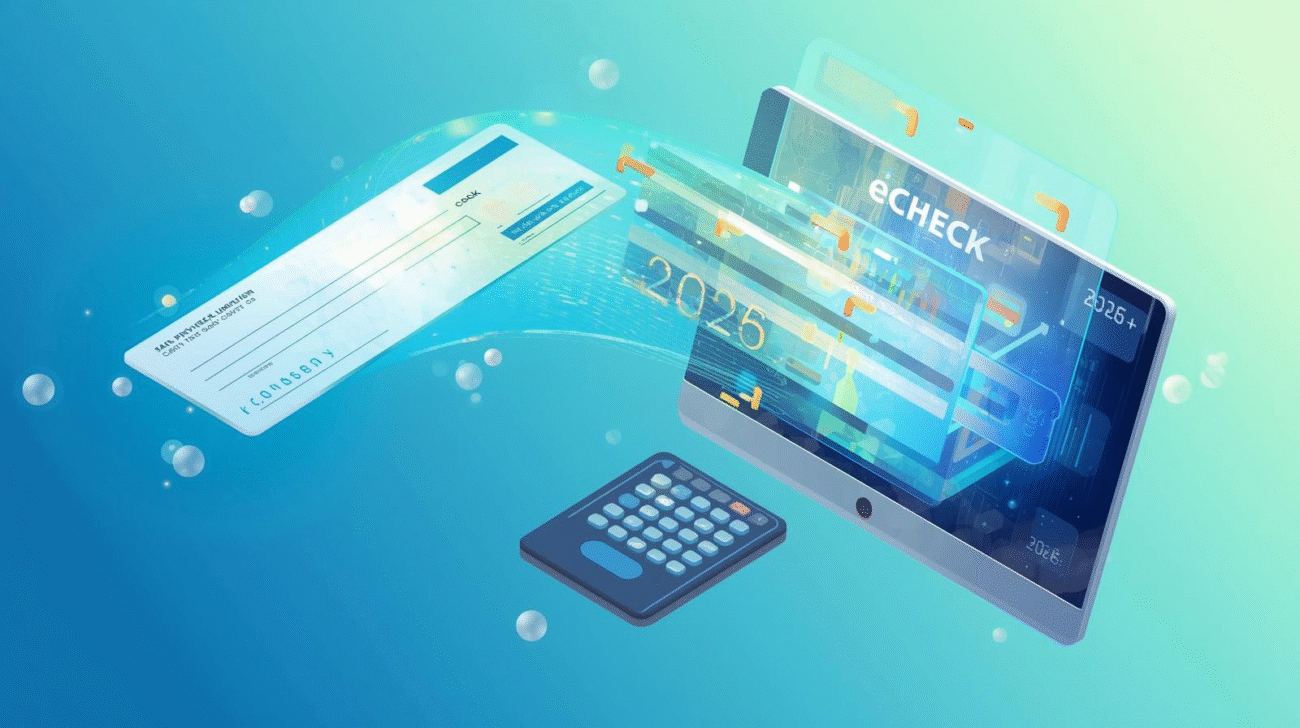In today’s rapidly evolving digital payment landscape, businesses have an ever-expanding array of options to accept payments from customers. Among these, two increasingly popular methods are Check by Phone and eCheck processing. While both offer convenient ways to handle transactions without the need for physical checks, they have distinct features, advantages, and potential drawbacks. Understanding the differences between Check by Phone and eCheck processing is crucial for any business looking to choose the most efficient and secure payment method for their needs.
What Is Check by Phone?
Check by Phone, also known as Telecheck or Phone Draft, allows businesses to accept check payments over the phone. The process is simple: a customer provides their bank account details, including their routing number and account number, to the business over the phone. The business then inputs this information into a secure system to initiate a payment. The funds are withdrawn from the customer’s bank account and transferred to the business’s account.
Benefits of Check by Phone
- Convenience: Check by Phone is a fast and easy way for businesses to accept payments. Customers don’t need to mail physical checks, and businesses can process payments over the phone in a matter of minutes. This can help reduce the time it takes to receive payments, especially in industries where customers prefer to make payments by phone.
- Low Processing Costs: Compared to credit card transactions, Check by Phone typically has lower processing fees. For businesses that deal with large payments, this can result in significant savings over time.
- No Physical Check Required: Since there’s no need for a physical check, businesses can accept payments from customers anywhere, anytime. This can be especially beneficial for businesses with remote customers or those who need to make payments quickly.
- Great for Recurring Payments: Check by Phone is often used for recurring payments, such as utility bills, memberships, or subscriptions. Once a customer’s bank information is on file, payments can be processed automatically, streamlining the payment process.
Drawbacks of Check by Phone
- Security Concerns: One of the main downsides of Check by Phone is the potential for security issues. Sharing sensitive banking information over the phone can put customers at risk if proper security measures are not in place. If the information falls into the wrong hands, it could lead to unauthorized transactions or identity theft.
- Manual Entry Errors: Since Check by Phone involves manually entering bank account details, there is a higher chance of human error. Incorrect information can lead to payment delays, bounced checks, and frustrated customers.
- Limited Consumer Trust: Some customers may be hesitant to provide sensitive bank information over the phone, especially if they are unfamiliar with the business or do not fully trust the security of the process.
What Is eCheck Processing?
eCheck processing is an electronic version of a paper check. Using Automated Clearing House (ACH) technology, eCheck transactions allow businesses to electronically debit funds from a customer’s checking account. Like Check by Phone, eCheck processing requires the customer’s bank account and routing numbers, but the transaction takes place entirely online or through electronic means.
Benefits of eCheck Processing
- Enhanced Security: eCheck processing offers better security than Check by Phone, as it involves fewer manual processes and uses encryption and secure data handling. eChecks go through the ACH network, which is heavily regulated and monitored for fraud. This makes eCheck transactions more secure than simply collecting bank details over the phone.
- Faster Processing Times: While Check by Phone may take several days to process, eChecks generally clear within 1 to 3 business days, thanks to the efficiency of the ACH network. Faster processing means businesses can access their funds more quickly, improving cash flow.
- Automated Payment Processing: eCheck systems can integrate with accounting and payment software, allowing businesses to automate invoicing, payment tracking, and recurring payments. This can save time, reduce administrative burdens, and improve accuracy.
- Reduced Risk of Errors: Since eCheck processing relies on electronic systems, the risk of human error is lower than with Check by Phone. Automated systems reduce the chances of data entry mistakes, ensuring smoother transactions.
- High Transaction Limits: eCheck transactions often have higher limits compared to credit card payments, making them ideal for large transactions. This makes eChecks an excellent option for businesses that frequently deal with high-value payments.
Drawbacks of eCheck Processing
- Longer Set-Up Time: Setting up eCheck processing can be more time-consuming than Check by Phone. Businesses may need to partner with an ACH payment processor, and there may be additional steps involved in integrating eCheck payments with their current systems.
- Fees and Bank Verification: While eCheck processing generally has lower fees than credit card transactions, businesses may still incur costs for ACH processing. Additionally, some eCheck processors may require verification of customer bank accounts, which can add an extra step to the process.
- Not Always Instant: Although eChecks typically clear faster than traditional paper checks, they are not instantaneous like credit card transactions. For businesses that need immediate payment confirmation, this can be a downside.
Key Differences Between Check by Phone and eCheck Processing
- Security: eCheck processing is generally more secure than Check by Phone, as it involves fewer manual steps and leverages ACH’s encryption and fraud prevention protocols.
- Speed: eCheck payments tend to clear faster than Check by Phone transactions, thanks to the ACH network’s efficiency. Check by Phone transactions may take longer due to the manual nature of the process.
- Processing Costs: Both Check by Phone and eCheck processing offer lower transaction fees compared to credit card payments. However, Check by Phone may have slightly lower fees, depending on the provider.
- Error Risks: Manual entry errors are more common with Check by Phone, while eCheck processing minimizes this risk through automated systems.
- Customer Experience: Customers may feel more comfortable with the security of eCheck payments compared to Check by Phone. Offering eCheck processing can enhance customer trust and satisfaction, especially for tech-savvy consumers.
Which Is Right for Your Business?
The choice between Check by Phone and eCheck processing ultimately depends on the specific needs of your business and your customers.
- If you prioritize convenience and simplicity, especially for recurring payments or one-off phone transactions, Check by Phone could be a viable option. It is easy to set up and offers a straightforward way to accept payments.
- If you need enhanced security and faster processing times, eCheck processing may be the better option. It offers automated solutions, higher transaction limits, and a more secure process, making it ideal for businesses dealing with large transactions or a tech-savvy clientele.
In many cases, businesses may benefit from offering both Check by Phone and eCheck processing to give customers more flexibility. This hybrid approach can cater to a wider range of customer preferences while ensuring that your business remains competitive in today’s fast-paced digital payment landscape.
Conclusion Both Check by Phone and eCheck processing offer businesses valuable ways to accept payments, but they cater to slightly different needs. Check by Phone is simple and cost-effective, while eCheck processing offers greater security and speed. By understanding the strengths and weaknesses of each method, you can choose the payment solution that best fits your business and boosts customer satisfaction.

